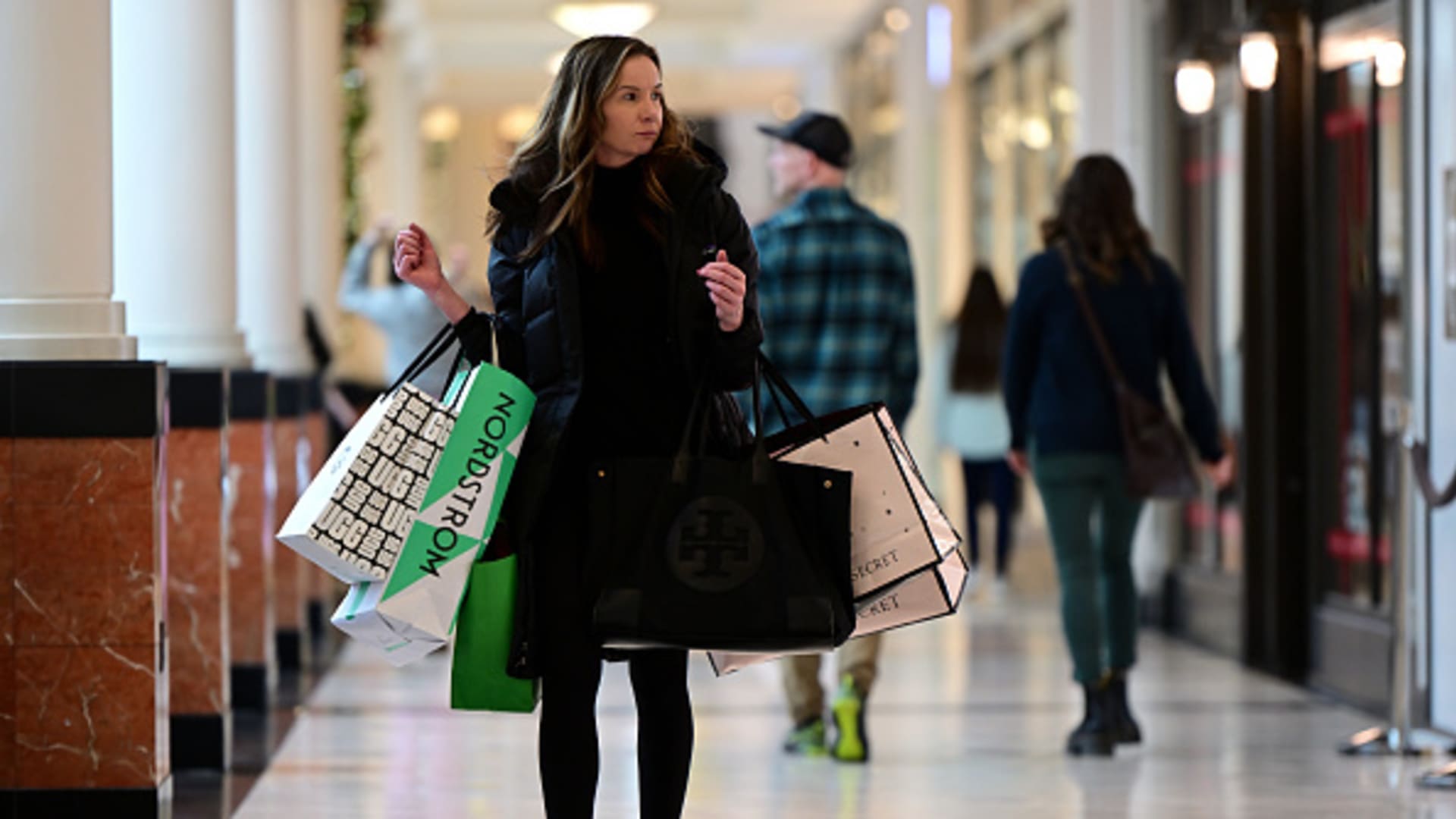For many Americans, October is a time for seasonal decorating and pumpkin spice lattes.
This year, it also marks the resumption of student loan payments at a point when U.S. households are already struggling to make ends meet amid high inflation and higher interest rates.
And yet, just as millions of borrowers face their first student loan bill in more than three years, October is expected to be a particularly big month for holiday shopping, as well, with consumers planning to start earlier and spend more than before.
More from Personal Finance:
60% of Americans are still living paycheck to paycheck
Today’s graduates make less than their parents
Buy holiday airfare in October
Those competing forces “create a battle for consumer spending,” said Nick Handrinos, vice chairman and leader of Deloitte LLP’s retail and consumer products practice.
October is unofficial start of holiday shopping season
This year, half of shoppers plan to begin their holiday shopping by Halloween, according to a recent Bankrate report.
A separate study, by RetailMeNot, found that more shoppers are starting even earlier than before — with as many as 64% kicking off the season in October, up from 53% in 2022.
Early estimates point to a strong shopping season
With more shoppers getting an early start on the season, holiday retail sales are likely to increase between 3.5% and 4.6% in 2023, according to Deloitte’s annual forecast.
“We expect healthy employment and income growth to keep the volume of sales growing for the 2023 holiday season,” said Daniel Bachman, Deloitte’s U.S. economic forecaster.
And despite predictions that people are shopping earlier to take advantage of sales and spread out their holiday expenses, research from Morning Consult found that early shoppers are splurging, not saving.
So far, consumers have remained remarkably resilient. However, there are recent signs of a shift.
Shoppers are still buying more than last year, but spending growth is slowing as the economy settles down, according to the National Retail Federation.
Going forward, “we expect moderate growth to continue despite uncertainties like the direction of inflation and interest rates as well as a potential government shutdown,” NRF President and CEO Matthew Shay said in a statement.
“Households have the capacity to spend, but momentum is slowing, in part because savings built up during the pandemic are running lower and credit costs are rising,” added Jack Kleinhenz, the NRF’s chief economist.
Student loan payments could weigh on wallets
“Student loan payments are another drag on the consumer,” said Brett House, professor of professional practice in economics at Columbia Business School.
“On the one hand, higher interest rates are constraining household budgets,” House said. Inflation has shown some signs of cooling but remains well above the Fed’s 2% target, leaving open the possibility of another interest-rate increase to come.
“On the other hand, labor markets remain strong,” House added. An unemployment rate of 3.8% is just slightly higher than it was a year ago. Job openings have been coming down, but “we still have very high participation rates,” he noted.
When it comes to consumer spending, “the biggest factor is always whether people have a job or not and we are near full employment,” House said.
Still, roughly half of borrowers are worried that the end of the payment pause will negatively affect their lives, according to a new survey from the National Endowment for Financial Education, or NEFE.
With borrowers feeling anxious heading into October, most will have to make budgetary changes, according to Billy Hensley, NEFE’s president and CEO.
“One in four of all U.S. adults will be reducing their spending in other areas,” Hensley said, “and that’s a shift in consumer spending that could be felt across the entire economy.”
